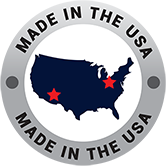Type M Thermocouple
Thermocouples function based on the Seebeck effect, a discovery credited to Thomas Johann Seebeck in 1821. This intriguing principle involves the generation of an electromotive force (EMF) or voltage at the junctions where dissimilar metals meet, a consequence of temperature disparities. In the typical construction of a thermocouple, two distinct metal wires are united at one end to create the measurement junction, with their opposite ends commonly connected to a measuring instrument or controller. The choice of metals is finely tuned to the targeted temperature range for the thermocouple’s application, resulting in a variety of thermocouple types, each manifesting unique temperature characteristics. When the temperature at the measurement junction (hot junction) deviates from that at the opposing end (cold junction or reference junction), a voltage emerges along the thermocouple wires. The amplitude of this voltage precisely reflects the temperature difference between the hot and cold junctions. The resulting voltage, typically within the millivolt range, is then measured using instruments like a voltmeter. Converting this voltage output into temperature entails the use of standard reference tables or mathematical equations, elucidating the nuanced relationship between voltage and temperature specific to the type of thermocouple being utilized.
A Type M thermocouple is one of the several types of thermocouples used for temperature measurement. Thermocouples are temperature sensors that generate a voltage signal proportional to the temperature difference between two junctions. In the case of Type M, it consists of two different metals: one is composed of pure nickel (Ni), and the other is an alloy of nickel and copper (CuNi).
The Specific Composition of a Type M Thermocouple Is:
- Positive leg: Pure Nickel (Ni)
- Negative leg: Nickel-10% Copper (NiCu)
Type M thermocouples are commonly used in vacuum and reducing atmospheres and are suitable for use in oxidizing atmospheres as well. They have a temperature range of approximately -200°C to 1,400°C (-328°F to 2,552°F).
It’s important to note that the selection of a thermocouple type depends on the application’s temperature range, environment, and other factors. Different types of thermocouples are designed for specific temperature ranges and environmental conditions.
Type M Thermocouples and Cleveland Electric Laboratories
Cleveland Electric Labs (CEL) holds significant importance in the realm of electrical engineering and technology. Renowned for its innovative solutions and cutting-edge advancements, CEL plays a crucial role in the development and application of electrical testing and measurement equipment. Their contributions extend across various industries, ensuring the reliability and efficiency of electrical systems. CEL’s commitment to research and development, coupled with a reputation for delivering high-quality products, underscores its importance in driving technological progress. Whether it’s in the fields of power generation, telecommunications, or industrial automation, CEL’s solutions have proven instrumental in enhancing safety, performance, and overall functionality.



